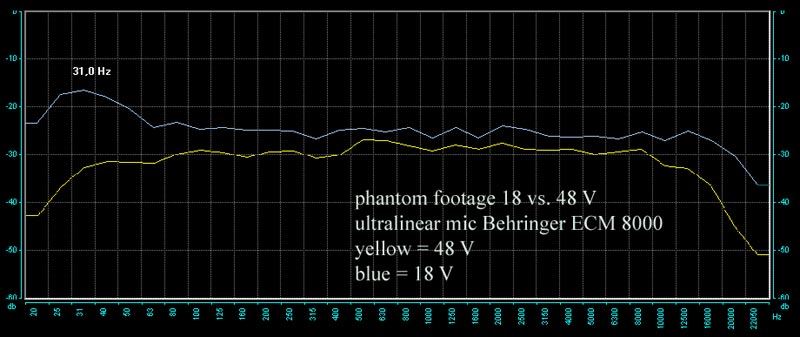Do different mic Feed Voltages make a Difference?
Do different mic Feed Voltages make a Difference?
If it comes to phantom feed of XLR-mics there are several voltages in use: 15 V, 18 V, 42 V or 48 V. The different voltages have been simply taken for granted. Do these differences possibly affect performance and if so, how do they distinguish themselves?
Here Analyser Pro 4.2.1 comes into the picture, because it offers the excellent opportunity to test what is really going on. We tested a beltfeed AKG B 18 with two 9 V batteries against a 48 V feed provided by our rack using the average function of Analyser Pro as described in this workshop. The mic is an ultralinear Behringer ECM 8000. The white noise is calibrated to our monitors by a Behringer Ultra Curve 8024.
Here is the result:

The main difference is a severe misreading of the 18 V feed in the low frequencies and a rougher curve in general. The consequence is that your mic reacts not as your mic with different feeds. We wonder whether providers of sophisticated test equipment are aware of this or even better are automatically correcting it.
Take the Behringer Ultra Curve Pro 8024 for example. It works as a test facility with a 15 V internal feed. Because it is also a nice hardware EQ it provides all you need to correct your monitor boxes. In our case both different settings finally achieve a linear curve with the average function of Analyser Pro like this:




